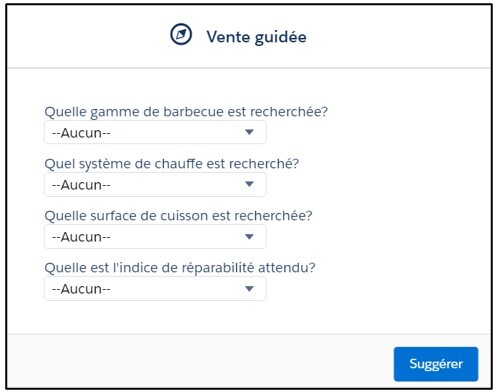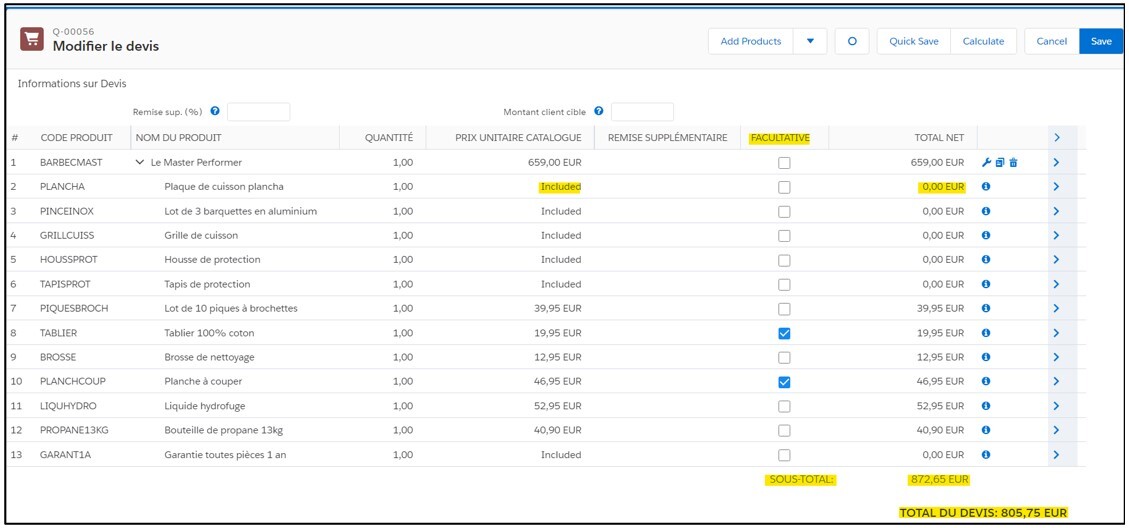For the vast majority of sales reps, issuing quotes is a standard and often labor-intensive part of the job. This traditional document—detailed and customized—is what customers rightly expect when they request a product or service.
But producing a quote can be time-consuming, sometimes leading to dissatisfaction and causing potential customers to take their business elsewhere.
Is there a way to speed up the creation of customized quotes?
Salesforce has an answer to this challenge facing many sales reps and businesses in general—a powerful, comprehensive tool that streamlines this often complex transaction with a particular aim in mind: boosting revenue.
Its name? Salesforce CPQ, which stands for Configure, Price, Quote.
In this article, Ferdinand Randria, Salesforce consultant at Cloudity, take you through six key features of Salesforce CPQ. It won’t cover everything, but it’ll give you a flavor of the faster, accelerated quote-generation workflow.
Guided selling: Find the RIGHT product for your customer
If you’re working with a large catalog, you don’t just want to propose any old product to your customer. You want to find the RIGHT product for your quote. And you want to be able to do that in double-quick time.
This is where Salesforce CPQ’s “guided selling” feature comes into play: a product entry filter system comprising a series of questions, with each answer dynamically affecting the questions that follow. The tool matches your answers with the products in your catalog and, as if by magic, proposes the perfect option!
Benefits:
- Saves time for the sales rep
- Drives customer satisfaction thanks to greater customization
- Accelerates the selling process
What’s more, the filter system is fully customizable within Salesforce CPQ.

Bundles: Boost sales volumes and profits
By packaging a product together with various options, you can expand the range of possibilities for your customers. In CPQ language, these packages are known as “bundles.”
Bundles let you combine options and option categories with a given “parent” product.

But with Salesforce CPQ, you can do more than just include basic combinations in a quote.
The tool lets you:
- flag options as included, i.e., priced at zero in the quote
- flag options as optional, with prices that are visible but excluded from the quote total
- set up option dependencies, i.e., suggest options that are only available if others have been selected
- set up option exclusions, i.e., suggest options that aren’t available if others have been selected
In light of modern-date quoting practices, these are must-have features.

Bundles play a key role in quote customization, as well as in boosting revenue.
To bundle or not to bundle? That is the question!
Product rules: Get support and guidance in creating quotes
Creating quotes can be a time-consuming task. But what if I told you that Salesforce CPQ can speed up this process, saving you clicks while helping to eliminate errors in option selection and combination?
Known as “product rules,” this is yet another of the tool’s must-have features.
These rules include:
- Selection rules: when certain options are selected, other options are automatically added, removed or deselected, or marked as unavailable for selection
- Alert rules: when certain options are selected, a pop-up alert message automatically appears; these messages can be ignored, but they provide helpful guidance for creating a customized quote

- Validation rules: when certain options are selected, a pop-up error message automatically appears; in this case, the quote can’t be saved until the error has been fixed

These rules have several benefits:
- Options are automatically added or removed, saving time in the quote creation process
- The automated checks provide support and guidance for the user
Now let’s talk about pricing. Salesforce CPQ also includes automatic and manual features that encompass current pricing practices but are equally important for quote creation.
Cost price and margin: Keep a handle on your prices
Being able to price a product according to cost price plus margin is incredibly useful for sales reps looking to keep a handle on their quoted prices and maximize their commission.
With Salesforce CPQ, you can manually set your margin on the cost price, as a percentage or an amount, for your quote.
The price quoted to the customer—cost price plus margin—is then calculated automatically.

And that’s not all: with Salesforce CPQ, you can also combine this cost-price-based pricing method with a margin approval process.
Contracted pricing: Use negotiated prices to keep customers happy
Another popular quoting practice is to use a price negotiated with a customer.


With Salesforce CPQ, you can then apply this price—specific to a given product for a given customer—to a new, renewed or amended quote.
Benefits:
- Drives customer satisfaction and loyalty
- Speeds up the selling process
- Saves time when creating customized quotes
Manual discounts: Reap the practical benefits!
When quoting, sales reps need to be able to add extra discounts manually.
With Salesforce CPQ, you can input these extra discounts as a percentage or an amount, either for an individual quote line (a different discount per line) or for the quote as a whole (the same discount for all quote lines).
What’s more, the tool also lets you customize these discounts as follows:
- Unit: the sales rep manually sets a desired unit price and Salesforce CPQ automatically calculates the discount needed to achieve that price
- Total: the sales rep manually sets a total price per quote line, irrespective of the product unit price and quantity, and Salesforce CPQ automatically calculates the discount needed to achieve that price.

To conclude : As we’ve seen, Salesforce CPQ streamlines and simplifies the quoting process by speeding up the steps, guiding the sales rep through the various stages, and supporting more accurate pricing.
But these quote creation features aren’t the only great thing about the tool.
Salesforce CPQ helps optimize the entire selling cycle, from quotes, orders and contracts to subscriptions, amendments, renewals and billing, giving sales reps an end-to-end view of their customers.
In short, it’s a strong contender for sales reps and companies looking for a comprehensive revenue-boosting solution.
Want to see a demo of the quote creation process in Salesforce CPQ?
Here’s a CPQ webinar presented by my colleague, Laurène Vachon, senior Salesforce consultant and project manager at Cloudity.
Want a more in-depth article about one of the features covered in this piece, or to learn more about how Salesforce CPQ can optimize other parts of the selling cycle (orders, contracts, subscriptions, amendments, renewals)? Let me know!
Need support with a Salesforce CPQ integration project? Contact Cloudity!
